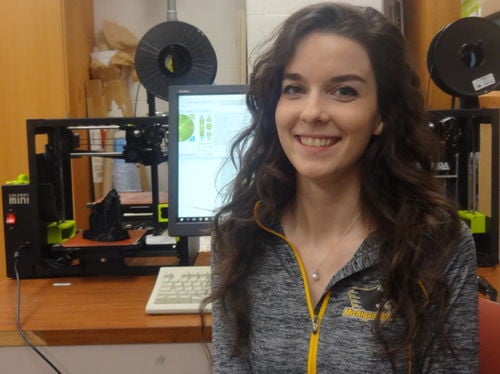J.M.Pearce (talk | contribs) m (→In the News) |
J.M.Pearce (talk | contribs) m (→In the News) |
||
| Line 51: | Line 51: | ||
* [https://www.scientias.nl/3d-printer-rendement-bijna-1000-5-jaar-uitstekende-investering/ 3D-printer: met een rendement van bijna 1000% over 5 jaar een uitstekende investering ] Scientias.nl (Dutch) | * [https://www.scientias.nl/3d-printer-rendement-bijna-1000-5-jaar-uitstekende-investering/ 3D-printer: met een rendement van bijna 1000% over 5 jaar een uitstekende investering ] Scientias.nl (Dutch) | ||
* [https://www.3d-grenzenlos.de/magazin/kurznachrichten/amortisation-privater-3d-drucker-studie-27231643/ Wissenschaftliche Studie besagt, ein privater 3D-Drucker kann bis zu 1000 Prozent Rendite abwerfen] - 3d-grenzenlos.de (German) | * [https://www.3d-grenzenlos.de/magazin/kurznachrichten/amortisation-privater-3d-drucker-studie-27231643/ Wissenschaftliche Studie besagt, ein privater 3D-Drucker kann bis zu 1000 Prozent Rendite abwerfen] - 3d-grenzenlos.de (German) | ||
* [http://www.innovationtoronto.com/2017/02/make-a-100-percent-or-more-return-on-your-money-with-a-low-cost-open-source-3d-printer/ Make a 100 percent or more return on your money with a low-cost open-source 3D printer]- Innovation Toronto (Canada) | |||
[[Category:3D printing]] | [[Category:3D printing]] | ||
Revision as of 18:46, 15 February 2017
| Economic Advantage to Making Your Own Stuff with 3D Printing |
|---|
Error in widget YouTube: Unable to load template 'wiki:YouTube' |
Source
- Emily E. Petersen and Joshua Pearce. Emergence of Home Manufacturing in the Developed World: Return on Investment for Open-Source 3-D Printers. Technologies 2017, 5(1), 7; doi:10.3390/technologies5010007 open access
- Supplimentary: http://www.mdpi.com/2227-7080/5/1/7/s1
- Lulzbot Mini - source code: http://download.lulzbot.com/Mini/
Abstract

Through reduced 3-D printer cost, increased usability, and greater material selection, additive manufacturing has transitioned from business manufacturing to the average prosumer. This study serves as a representative model for the potential future of 3-D printing in the average American household by employing a printer operator who was relatively unfamiliar with 3-D printing and the 3-D design files of common items normally purchased by the average consumer. Twenty-six items were printed in thermoplastic and a cost analysis was performed through comparison to comparable, commercially available products at a low and high price range. When compared to the low-cost items, investment in a 3-D printer represented a return of investment of over 100% in five years. The simple payback time for the high-cost comparison was less than 6 months, and produced a 986% return. Thus, fully-assembled commercial open source 3-D printers can be highly profitable investments for American consumers. Finally, as a preliminary gauge of the effect that widespread prosumer use of 3-D printing might have on the economy, savings were calculated based on the items’ download rates from open repositories. Results indicate that printing these selected items have already saved prosumers over $4 million by substituting for purchases.
Keywords
distributed manufacturing; additive manufacturing; 3-D printing; consumer; economics; open-source
See also
- Life-cycle economic analysis of distributed manufacturing with open-source 3-D printers
- Quantifying the Value of Open Source Hardware Development
- Open-source, self-replicating 3-D printer factory for small-business manufacturing
- Distributed manufacturing with 3-D printing: a case study of recreational vehicle solar photovoltaic mounting systems
- Global value chains from a 3D printing perspective
In the News
- Just Press Print: 3-D Printing At Home Saves Cash - MTU News , Eureka Alert, Science Daily, Xania News, Science Magazine
- Researchers calculate major cost savings of 3-D printing household items - Phys.org , HiTech Days, ECN Magazine
- 3D-printed household items mean major cost savings - Electronics Specifier
- 3D printing at home will save you money down the line, says new study from MTU - 3Ders, Longroom, STL finder
- License to Print Money at Home?- Engineering360 IEEE GlobalSpec
- Report Indicates That 3D Printing Can Save Consumers Up To $4 Million-One Angry Gamer
- How 3-D printing at home saves big bucks -- ScienceDaily- DailyMe, Eurasia Review, Last Min Christmas
- MTU Study: 3-D Home Printer To Produce 1000 Percent Return Over 5 Years-MI Tech News
- New study shows how 3-D printing at home saves big bucks - Domain B
- Like Making Money: Study Shows How 3-D Printing at Home Saves Big Bucks - Ideas, Inventions And Innovations
- Low-Cost 3D-Device Prints Your Household Items - News Island Crisis
International
- Tuore tutkimus: Tällä tonnin investoinnilla säästät jopa 11 000 € viidessä vuodessa -Tekniikka & Talous (Finland)
- 3D打印用于日常究竟能多省钱?半年回本,5年回报10倍- Weiot (China)
- MTU最新研究:在家3D打印除了省钱还能获得1000%的的高回报 - 24 Maker (China)
- MTU的新研究揭晓在家3D打印可以为您节省金钱 Wengu.Aniu.TC (China)
- Вокруг света с 3Dtoday: новый гидрогель для костной биопечати, итоги первого конкурса Hyperloop и исследование экономии от бытовых 3D-принтеров -3D Today (Russia)
- 3D-printer: met een rendement van bijna 1000% over 5 jaar een uitstekende investering Scientias.nl (Dutch)
- Wissenschaftliche Studie besagt, ein privater 3D-Drucker kann bis zu 1000 Prozent Rendite abwerfen - 3d-grenzenlos.de (German)
- Make a 100 percent or more return on your money with a low-cost open-source 3D printer- Innovation Toronto (Canada)

